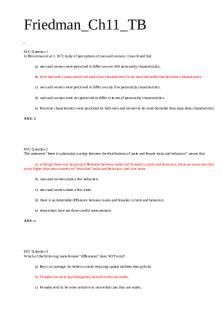Friedman Model PDF

| Title | Friedman Model |
|---|---|
| Author | 88 kamini Sharma |
| Course | BA( hons.) Geography |
| Institution | University of Delhi |
| Pages | 3 |
| File Size | 166.1 KB |
| File Type | |
| Total Downloads | 12 |
| Total Views | 145 |
Summary
regional geography...
Description
happened in the Western countries. However, after a deeper look at the processes we see that the driving forces have been entirely different.
The Eastern European countries are still industrial as to their economic structure, just recently moving from labour intensive production towards capital intensive manufacturing which means that driving forces and models of settlement development can be traced back to the Western countries development of the 1970-1980s. Hypothetically, according to the CPM, the deconcentration processes should intensify in Estonia. True, we must consider that the transition processes from industrial and to informational societies will take place simultaneously and at a higher speed.
The empirical part analyses the regional development of Estonia in the historical perspective. The description of the past developments attempts to outline (1) influential causal factors, (2) periods of concentration and deconcentration, and (3) particularities compared with the Western countries. The discussion is mainly supported by population data of censuses, but it also uses other empirical materials such as small case studies, interviews and observations.
Finally, we attempt to design a comparison of different urban development stages in the UK, Finland and Estonia.
2. Friedmann’s core -periphery model, models of Gibbs and Hautamäki and the synthesis
John Friedmann (1966) developed the core-periphery model studying differences between regions and the development policy of Venezuela. He differs four stages of development in economic space: I)
The pre-industrial (agricultural) society, with localised economies, in which settlement structure consisting of small units remains dispersed and whose economic subjects (population and merchandise) have low mobility.
II)
The concentration of the economy from periphery to the core begins as a result of capital accumulation and industrial growth. The interregional
capital investments and economic concentration.
3
mobility of labour and intensity of trade rises enormously. However, the labour force daily space remains local, as the personal mobility of people remains limited. The periphery is totally subordinated to the centre of political and economic dominance. The industries producing the highest extra-value are located in the core area. I) Core
II)
Core
III)
Core
IV)
Core
Periphery
Periphery
Periphery
Periphery
Figure 1. Friedmann’s (1966) Core -Periphery Model. III)
Economic growth spreads across the country and causes other growth centres to appear. The main reasons for deconcentration are the lack of labour force and rocketing prices in the core area. A similar effect has been described in the 1950`s by Perroux (1955) – “growth poles”, Myrdal (1957) – “spread” effect and by Hirshmann (1958) – “trickle down” effect. These theories have influenced European regional policy in the 1960s and 1970s. Furthermore, the deconcentration of economic units and population (living estates) took also place within the metropolitan areas: intensity of people’s personal daily mobility and distances between workplace and home increase. However, the growth of the metropolitan region proceeds and the remote periphery continues to decline.
4
IV)
The spatial integration of the economy and achievement of equilibrium. Friedmann (ibid.) believed that the allocation of economical activities should attain optimum, balance and stability. That does not mean that trade and the mobility of the population should decrease. Quite the contrary! As far as different areas specialise in certain functions, there will be division of labour between regions. An integrated model foresees a cyclical movement of the population caused mostly by age: the youth study in big cities, families settle in suburbs, elderly people look for cheap and peaceful rural environment. Friedmann, along with Miller, also published in 1965 the urban field concept in which the recreative hinterland of cities was limited with ca three hours of drive.
+5 %
Towns
City
Small towns
Country
I
II
III
IV
V
Figure 2. Gibbs’ (1963) model of settlement development. In 1966, Gibbs presented his five-stage model for changes in the concentration of the population in cities, small towns and country areas: I)
Towns are born, but the population of the surrounding country-areas grows faster or as fast as in the cities.
II)
The cities begin to grow faster than the country-areas.
III)
Country-areas begin to decline in absolute terms.
IV)
The population of small towns decreases.
V)
The movement between different parts of the settlement balances, big centres loose population.
5...
Similar Free PDFs

Friedman Model
- 3 Pages

Friedman Test
- 8 Pages

Friedman 2
- 7 Pages

Friedman Ch11 TB - TB
- 15 Pages

Curva de Friedman
- 1 Pages

Friedman et le Monétarisme
- 3 Pages

Non - parametric Friedman test
- 38 Pages

Milton Friedman - Libertad DE Elegir
- 72 Pages

El pensamiento de Milton Friedman
- 34 Pages
Popular Institutions
- Tinajero National High School - Annex
- Politeknik Caltex Riau
- Yokohama City University
- SGT University
- University of Al-Qadisiyah
- Divine Word College of Vigan
- Techniek College Rotterdam
- Universidade de Santiago
- Universiti Teknologi MARA Cawangan Johor Kampus Pasir Gudang
- Poltekkes Kemenkes Yogyakarta
- Baguio City National High School
- Colegio san marcos
- preparatoria uno
- Centro de Bachillerato Tecnológico Industrial y de Servicios No. 107
- Dalian Maritime University
- Quang Trung Secondary School
- Colegio Tecnológico en Informática
- Corporación Regional de Educación Superior
- Grupo CEDVA
- Dar Al Uloom University
- Centro de Estudios Preuniversitarios de la Universidad Nacional de Ingeniería
- 上智大学
- Aakash International School, Nuna Majara
- San Felipe Neri Catholic School
- Kang Chiao International School - New Taipei City
- Misamis Occidental National High School
- Institución Educativa Escuela Normal Juan Ladrilleros
- Kolehiyo ng Pantukan
- Batanes State College
- Instituto Continental
- Sekolah Menengah Kejuruan Kesehatan Kaltara (Tarakan)
- Colegio de La Inmaculada Concepcion - Cebu






